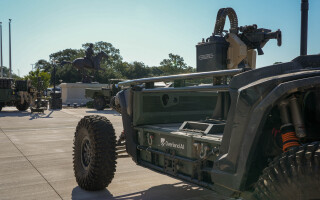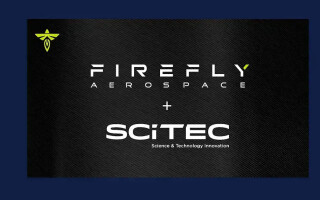Drone-swarm tactics program leverages game-based technologies
StoryAugust 09, 2018
Raytheon BBN Technologies has teamed up with Smart Information Flow Technologies and Oregon State University to tackle a challenge from Defense Advanced Research Projects Agency (DARPA) that aims to design, develop, and demonstrate a swarm of unmanned aircraft systems (UASs) or unmanned ground systems (UGSs) that can maneuver and accomplish missions within a complex urban environment.
Raytheon BBN Technologies has teamed up with Smart Information Flow Technologies and Oregon State University to tackle a challenge from Defense Advanced Research Projects Agency (DARPA) that aims to design, develop, and demonstrate a swarm of unmanned aircraft systems (UASs) or unmanned ground systems (UGSs) that can maneuver and accomplish missions within a complex urban environment.
According to documents from DARPA, the BBN team is developing a set of tools and technologies that will enable researchers to “create and test their own swarm tactics and supporting technologies.”
DARPA officials began the initiative – dubbed the OFFensive Swarm Enabled Tactics (OFFSET) program – in February 2017. Researchers will use swarms of as many as 250 UASs/UGSs per mission; to this end, they seek to use game-based technologies to create realistic environments that are user-friendly for digital natives.
The requirements set by DARPA are setting the stage for a fuller view of what tools the warfighter may be using in the coming years. The scenario that DARPA laid out for what it calls “Vignette 1,” which covers swarm autonomy, has as its mission to isolate an urban target within 15 to 30 minutes using a swarm of 50 UASs or UGSs – all of this occurring within two city blocks.
The BBN team is developing three key technologies: A visual interface, a game-based simulator, and a physical swarm testbed. “The key challenge in developing and testing tactics for swarms is that it is difficult to reason about and program a large number of autonomous and potentially independent agents simultaneously,” says Shane Clark, a scientist at Raytheon BBN Technologies in Cambridge, Massachusetts.
Visual interface
The team’s visual interface consists of a “drag-and-drop” mechanism that creates and manipulates drone tactics. “We’re developing a programming interface and framework to make that easier,” Clark says. “Part of that is providing programming primitives that already work in the context of swarms to move a large number of vehicles without running into each other – that is one example.” (Editor’s note: Primitives are the simplest elements that are available in a programming language.)
The “drag-and-drop” capability will enable users to easily move drones and map an area, he explains. Part of the challenge is delivering the “primitives in a way that’s easy to compose and test together. Instead of having to write code to test that quickly, they can just combine blocks in a user interface.”
Game-based simulator
The second technology the team is developing is a game-based simulator that will evaluate the tactics developed for such vignette scenarios. “For the game-based simulator, we’re using an open source project called AirSim originally created by Microsoft research,” Clark says. “The goal of the game-based simulator is to allow rapid low-stakes iteration when you’re developing tactics. The simulator is there to give people a high-fidelity representation of what should happen when they try to deploy on real hardware.”
Game-based technologies have been on the rise within defense platforms. In this instance, it enables users to see realistically what will happen during a mission. One reason that Raytheon BBN is using this technology is to be able to “offer high-quality image capture in simulation, so that if you’re doing something like simulating the operation of a camera or processing on camera data, the imagery we grab from within the simulator is pretty representative of the real world,” he adds.
When the user was born during the digital era, this type of gaming-derived technology is intuitive and easy to learn. It’s also important to note that “The other thing that they do really well with modern game engines are things like physics modeling,” Clark adds. “You get really good models of things like collision lift, weather conditions, etc.”
Physical-swarm testbed
The team is also developing a physical-swarm test bed, arguably the most important portion of the project. “The test bed, in this case, is a heterogeneous swarm of air and ground vehicles that we are procuring with commercial off-the-shelf (COTS) hardware and making modifications as necessary,” Clark says. “We are also providing the hardware and the software programming interface so that others can bring their best tactics to the field and see what they actually do in practice.”
Even with all this activity, the BBN team is still only in the initial phase of the program, he continues: “It’s organized in a bit of an unusual way in that there are three phases for the program, each running 18 months, and we’re about a third of the way through phase one. At the same time, DARPA is releasing what they call ‘sprinter’ amendments.”
For those still interested in participating in the OFFSET program, Clark says that “Every six months they’re soliciting new teams for small contracts, where they do things like develop tactics or platform modifications that we could potentially integrate. We’re actually working with sort of a new cast of potential characters and contributors every six months throughout the program.”







